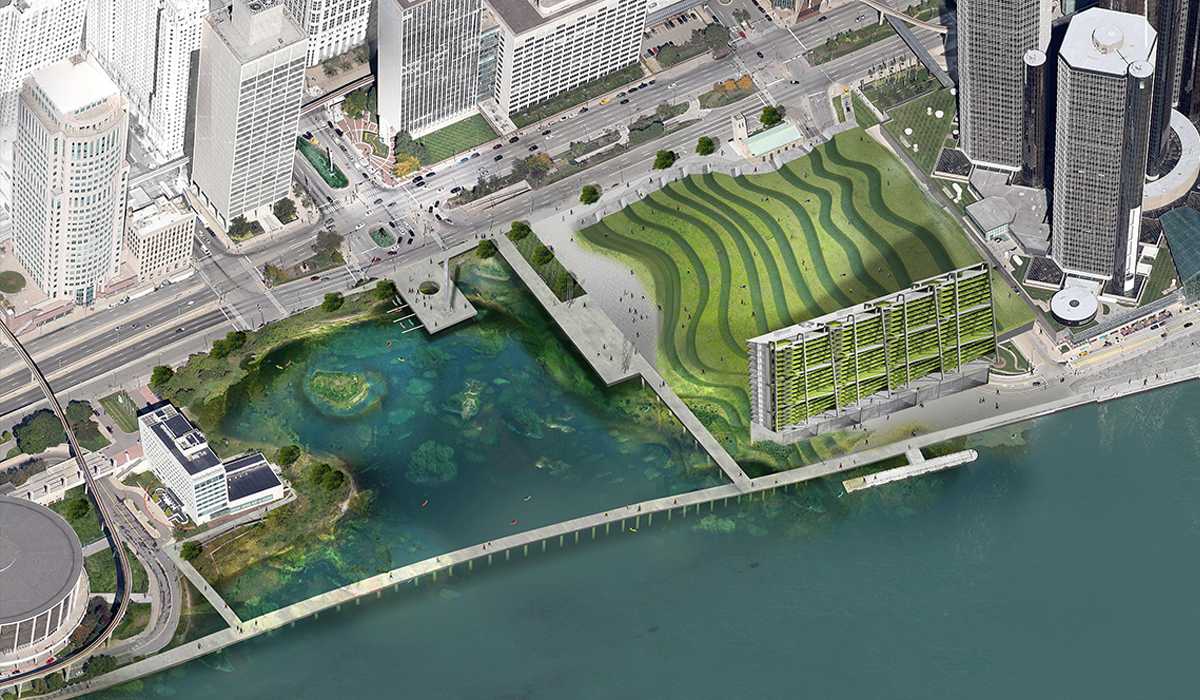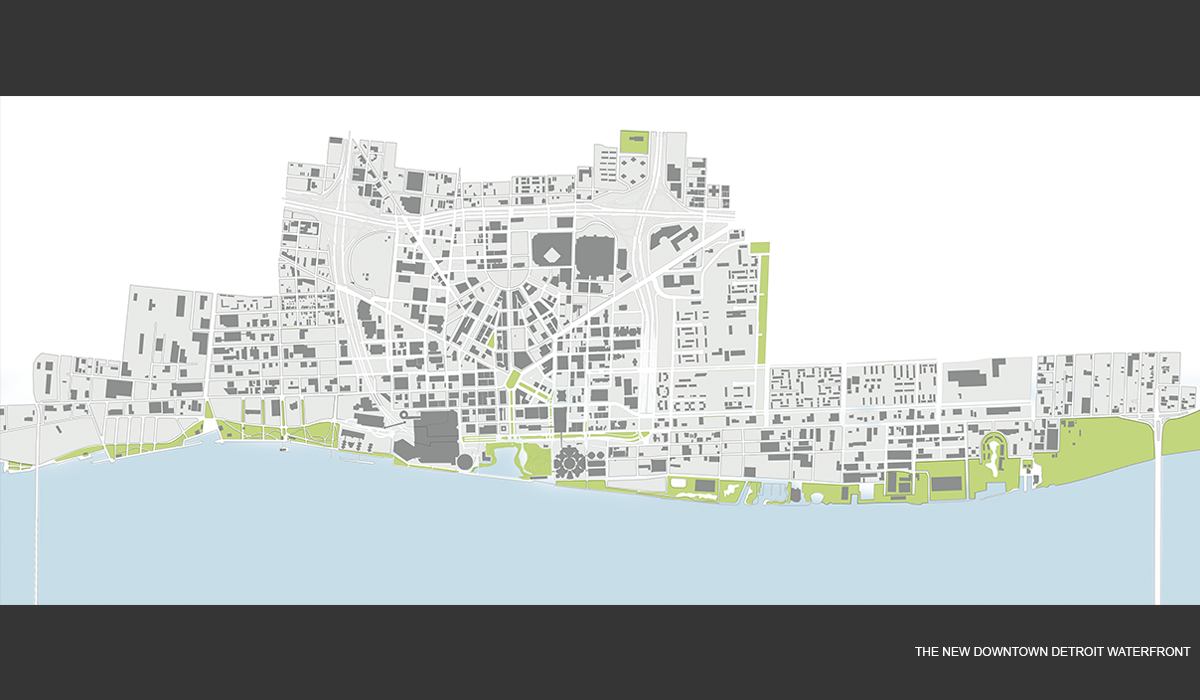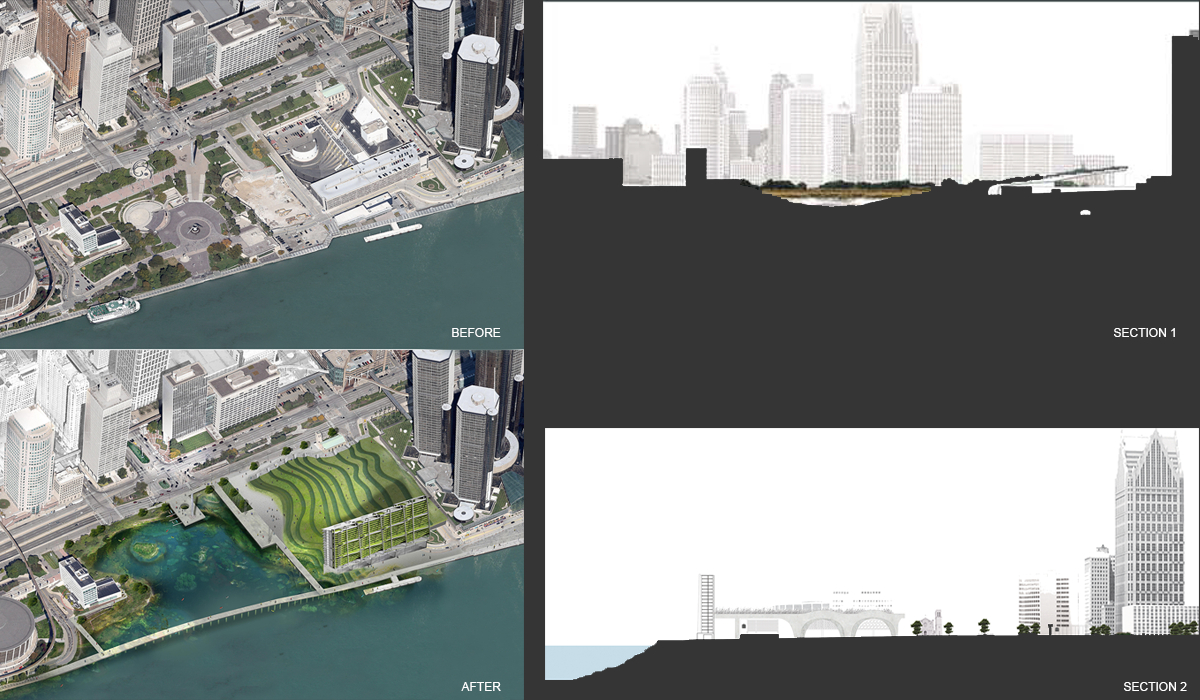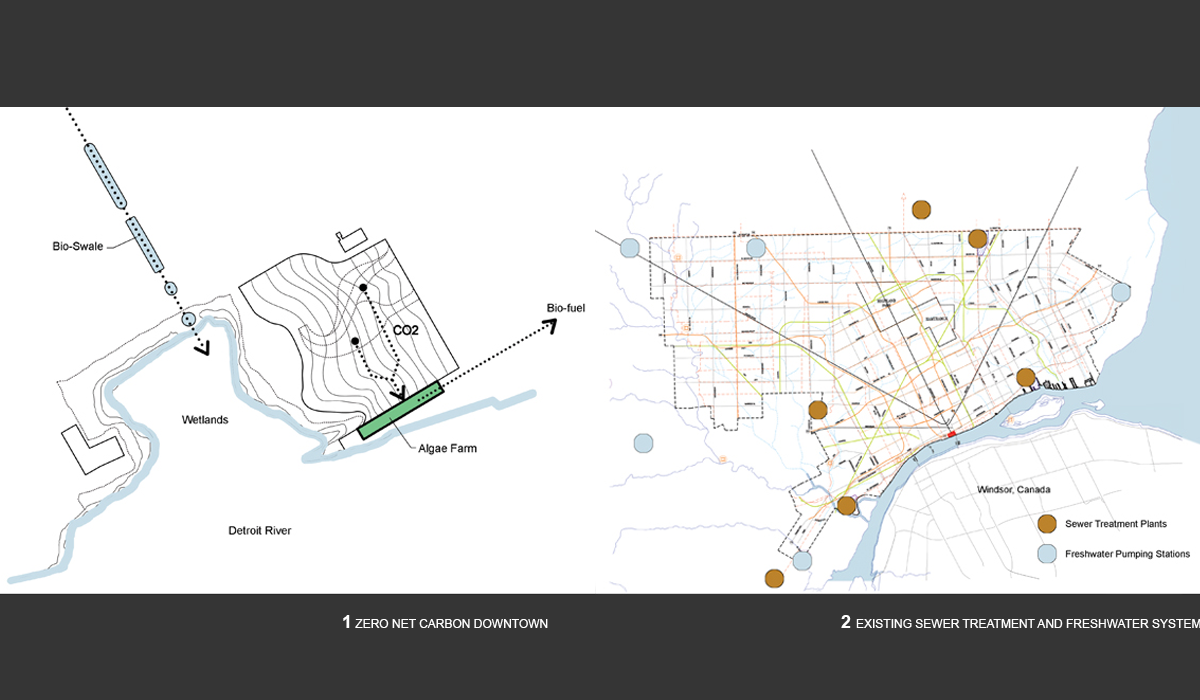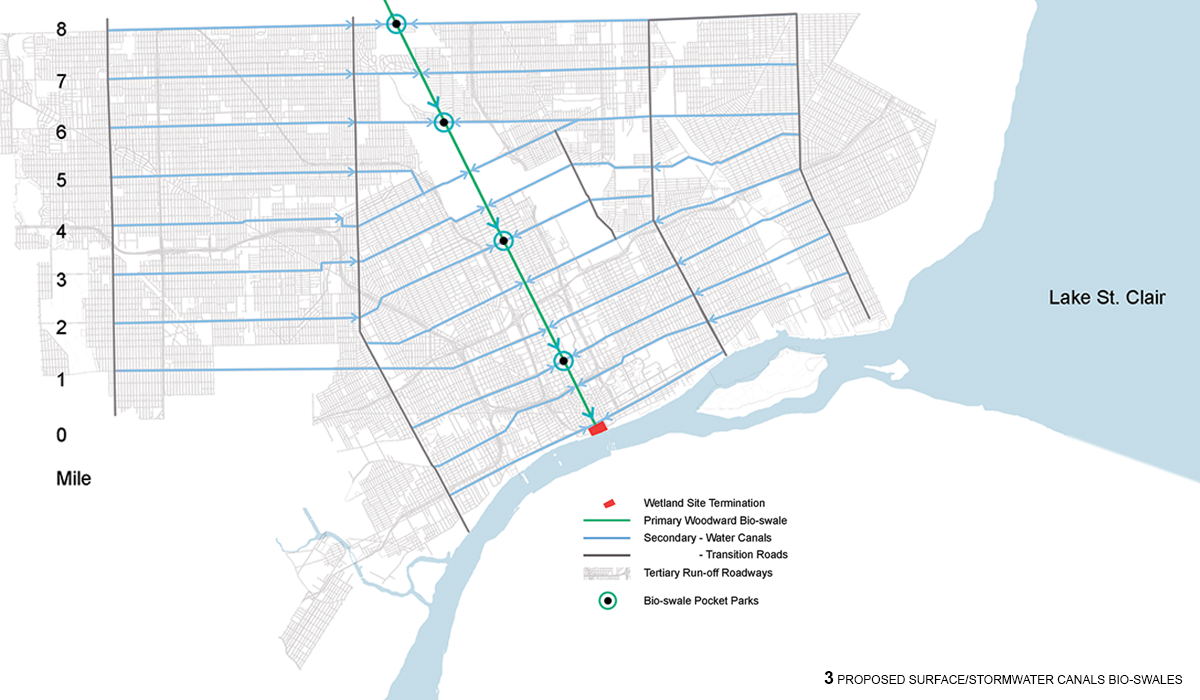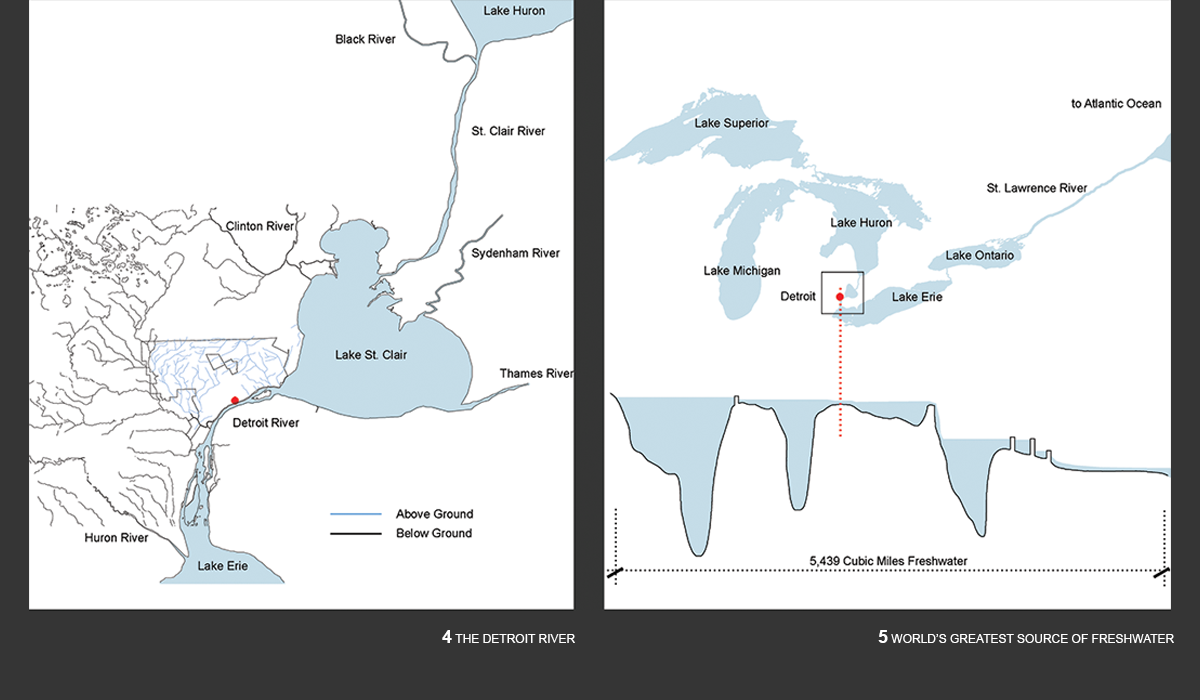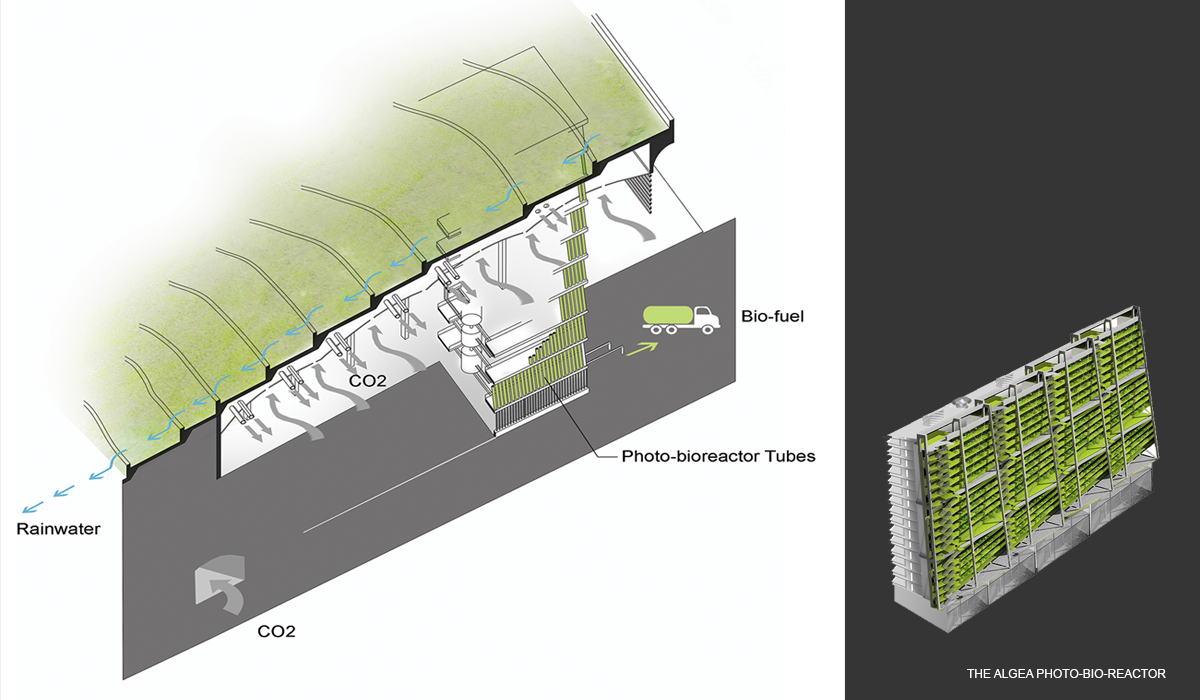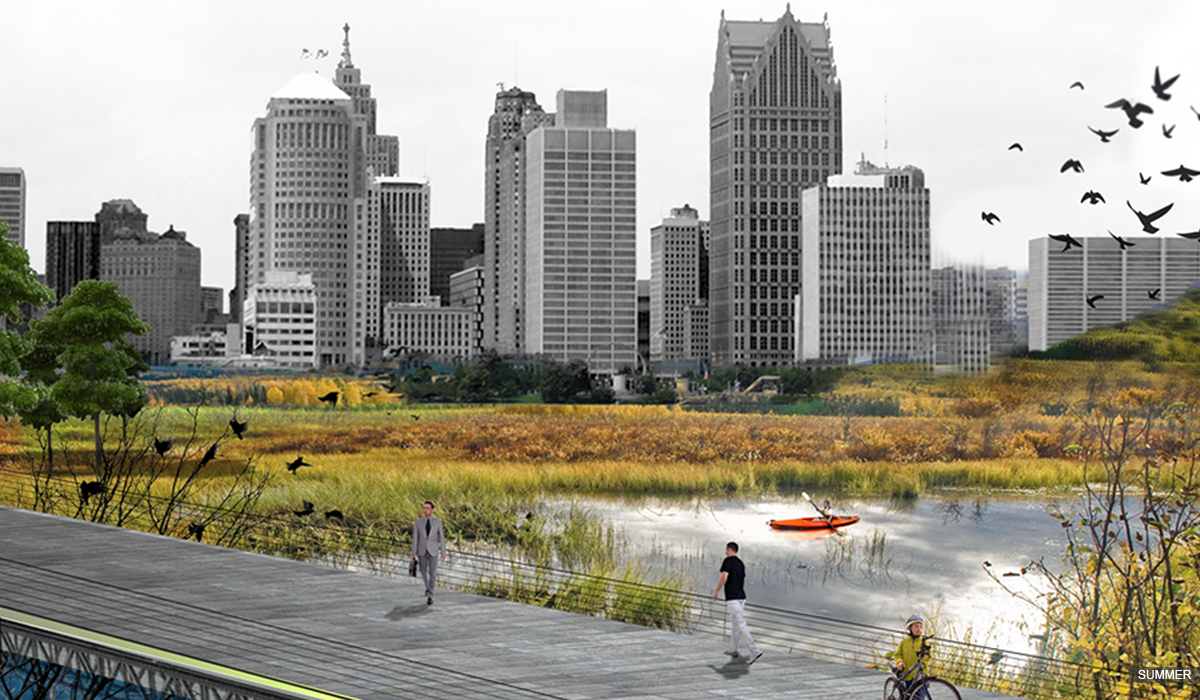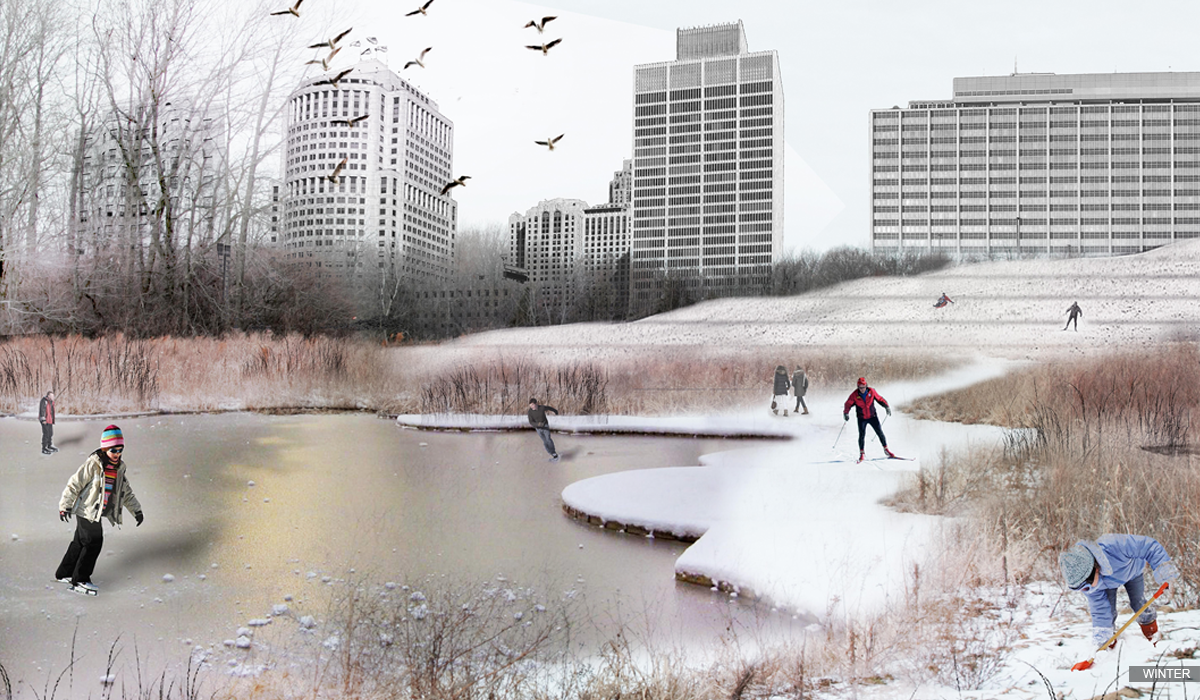Detroit Watermile
Competitions/Research
1. ZERO-NET-CARBON DOWNTOWN
What if Detroit was a zero-net carbon city? The new downtown waterfront can be the best source of education about the future. A wetland area to receive the new surface/storm water already cleansed by the bio-swales along the axis of Woodward Avenue, a new arena for music and performances through the year with a green-roof system to prevent heat island-effect in the hearth of the city, and an algae photo-bio reactor plant fed by the 25,623,000 tons of CO2 annually produced by the Detroit-Windsor Tunnel alone, producing tons of bio-fuel as a by-product. To
ameliorate the effects of global warming reducing the CO2 levels is the most critical step.
2. EXISTING SEWER TREATMENT AND FRESHWATER SYSTEMS
Most of the storm water runoff from the City of Detroit occurs in the combined sewer system that transports the sanitary waste from residences, industries and businesses, along with storm water drainage. There are approx. 50 municipally-owned storm sewers Including 22 outfalls to the Detroit River and its tributaries, and 28 outfalls to the Rouge River.
During some wet weather events, combined sewage is discharged at permitted locations along the Detroit and Rouge Rivers.
3. PROPOSED SURFACE/STORMWATER CANALS AND BIOSWALES
The city has a small number of municipally-owned separate storm sewers. These sewers have a very limited drainage area consisting primarily of parkland with river frontage, and a few roadways where City streets are adjacent to the Rouge River or from bridges over river crossings. Sensitively chosen infrastructure can interweave neighborhoods with landscape, in contrast to Detroit’s history of big investment into freeways. Adding permeable areas of land, trees and local lakes will have both recreational and infrastructural value. The creation of the dispersed ponds, street storm drain systems and bio-swales can aid storm water management, easing the burden on city services. These systems and the proposed wetland along the edge of the Hart plaza with indigenous wetland planting that would break down the lead, mercury and other pollutants would also purify the storm and surface water before returning it to the Detroit River.
4. THE DETROIT RIVER
Lake St. Clair is a fresh-water lake that lies between the Province of Ontario, Canada and the State of Michigan. It is fed with fresh water flowing out of Lake Huron via St. Clair River which has an extensive delta, the largest one within the great lakes system. The Thames River and Sydenham River also flows into Lake St.Clair from southwestern Ontario, feeding into the Detroit River and thence into Lake Erie. Some five million people receive their drinking water from the lake, which also hosts an impressive array of wildlife. The St. Clair River delta, located at the northern end of the lake, provides an important habitat for fish and migrating waterfowl. The largest coastal delta in the Great Lakes system, it contains the majority of the lake's remaining wetlands.
5. WORLDS GREATEST SOURCE OF FRESH WATER
Detroit is the gateway to the world’s greatest source of fresh water, The Great Lakes. Containing 84% of the freshwater source in the USA, 21% of the world’s population it is directly affected by the Detroit metropolitan area. Global freshwater resources threatened by rising demands due to rapid population growth, changing climate, droughts, flooding by rain & rising sea levels play a very important role for the future for the metropolitan area.
This is the global significance of the water mile at the waterfront of Detroit.
THE ALGEA PHOTO-BIO-REACTOR:
Detroit-Windsor Tunnel to Canada alone produces 25,623,000 tons of CO2 annually. By directing the CO2 below the surface of the new ‘green’ arena into an algae farm and algae/oil recovery system, we propose to improve the quality of air in the heart of the city. As a by-product, this new plant would produce approximately 170,000gallons of Bio-fuel.

